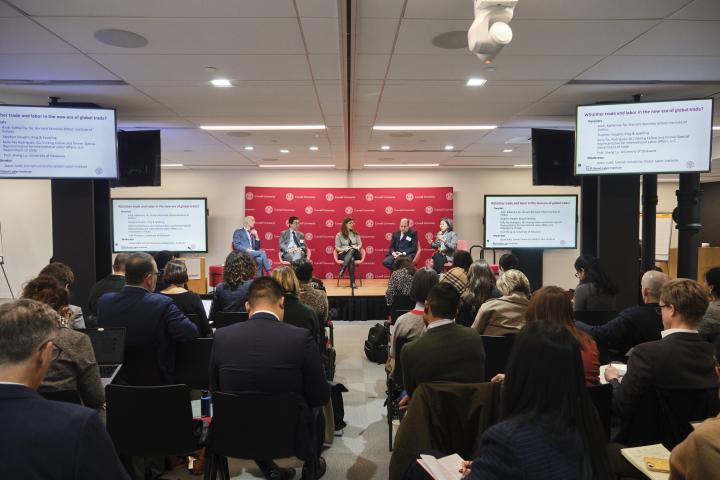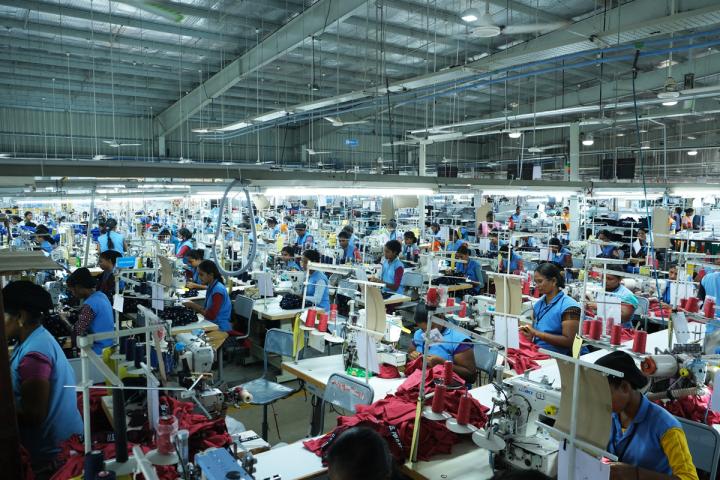
“Repeat, Regain or Renegotiate?” NCP Working Paper No. 2 asks What's the future of apparel?
This paper outlines possible scenarios for a post-COVID-19 future of the global apparel industry, with special attention to the likely impacts for workers, employers and governments in the Asia and Pacific region.
This paper builds on the 2020 ILO/Cornell NCP Research Brief examining the ‘ripple effects’ of the COVID-19 pandemic for workers and employers in Asia’s apparel industry (ILO, 2020). The first paper examines the particular vulnerabilities of the region’s apparel industry—accounting for 60 percent of the world’s exports—to short-term shocks. This complementary paper takes a longer view. The authors plot the decades-long, pre-pandemic trajectories of industry consolidation, automation, e-commerce, sourcing patterns, and governance of labor practices against possible changes in direction in the post-pandemic era. The paper defines possible long-term choices for buyers, employers, workers and regulators in the global apparel industry in three scenarios for the post-pandemic industry that go beyond the ‘COVID recovery’ reporting and recent scholarship on the future of the industry.
This study used a qualitative research methodology to explore long-term changes in the garment industry pre-pandemic and its post-pandemic future. A desk literature review was conducted to map existing academic, industry, and financial research related to the apparel industry. In addition, interviews were conducted with 29 apparel industry experts working in Asia and globally—regulators, apparel brands and retailers, employers and their organizations, unions and labor rights organizations, journalists—between August 2020 and March 2021.
Interviews used as guidance questions centered on the future of garment industry with particular attention to changes in sourcing patterns and practices and their impact for workers, buyer-supplier relationships, global governance of the apparel industry, and changing consumer behaviors. (A list of research topics and interviewees is provided in Appendix 1). The group of experts is not necessarily representative of the experiences of and judgements regarding the future of the industry in Asia. However, the group is composed of experts with long-lasting experience and different backgrounds in this industry, allowing this study to capture a diversity of opinions, business models and approaches to governance of work in global supply chains.
The findings are organized here in five sections. The first tracks the industry’s acceleration along familiar trajectories and contributes to the literature an analysis of apparel industry concentration which points toward large, well-capitalized suppliers in Asia receiving ever-larger orders from ever-larger buyers, allowing market concentration and consolidation, automation and digitalization to move together. Section 2 looks at long-term changes in sourcing patterns and practices—including a new analysis of climate change impacts on the geography of apparel production in Asia—and the distribution of risk and cost along global supply chains.
Section 3 anticipates the impacts of these long-term changes on working conditions, wages and industry employment levels with important implications for policymakers at both the producing and consuming ends of fashion’s supply chains. Section 4 examines the status and future of labor governance, both public and private, and their impacts for suppliers and workers, in particular. The concluding section looks at three progressively optimistic scenarios—Repeat, Repair or Renegotiate—for the future of the apparel industry in Asia and globally.
This discussion paper is also available as an ILO Better Work Discussion Paper here.



